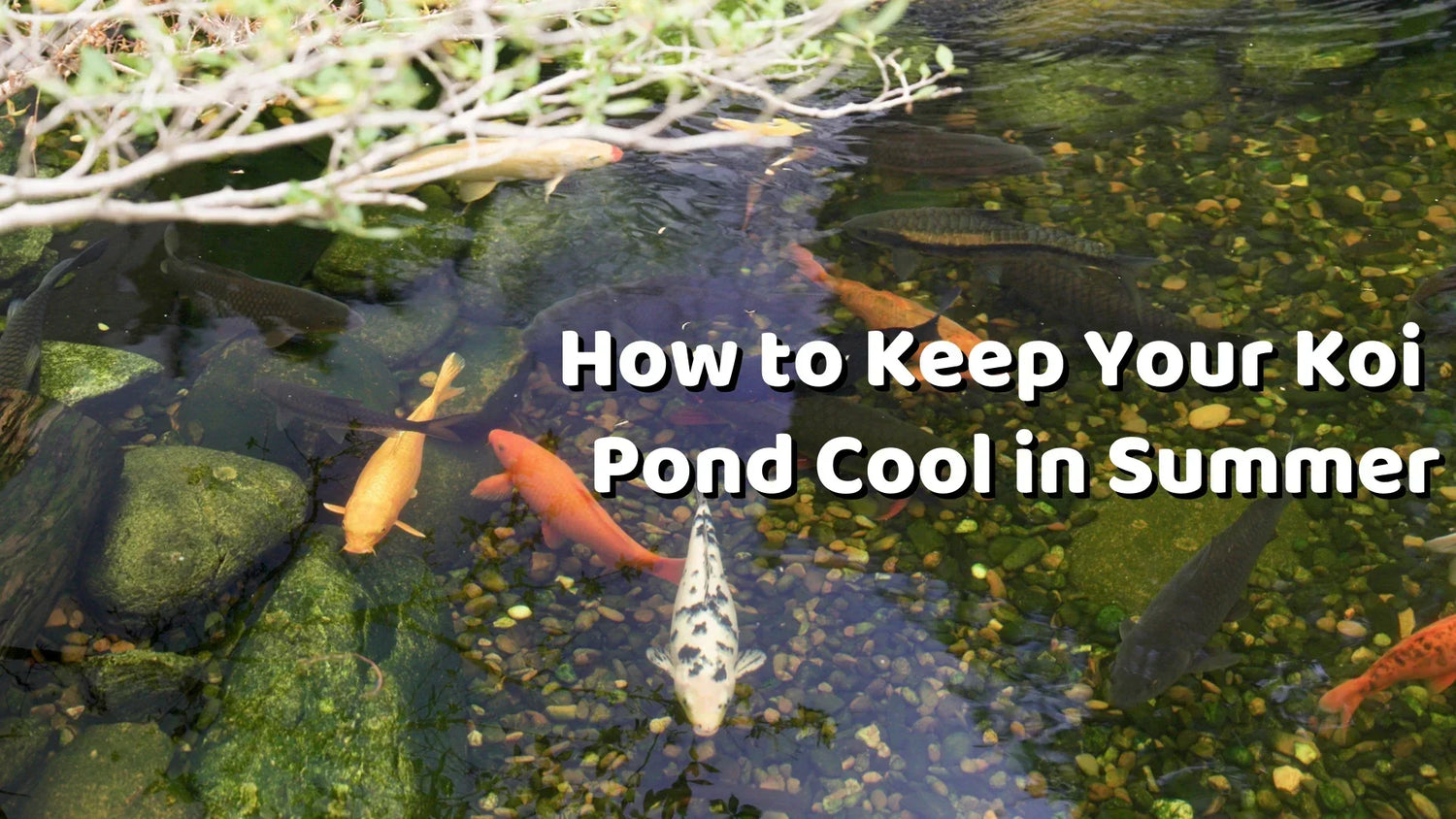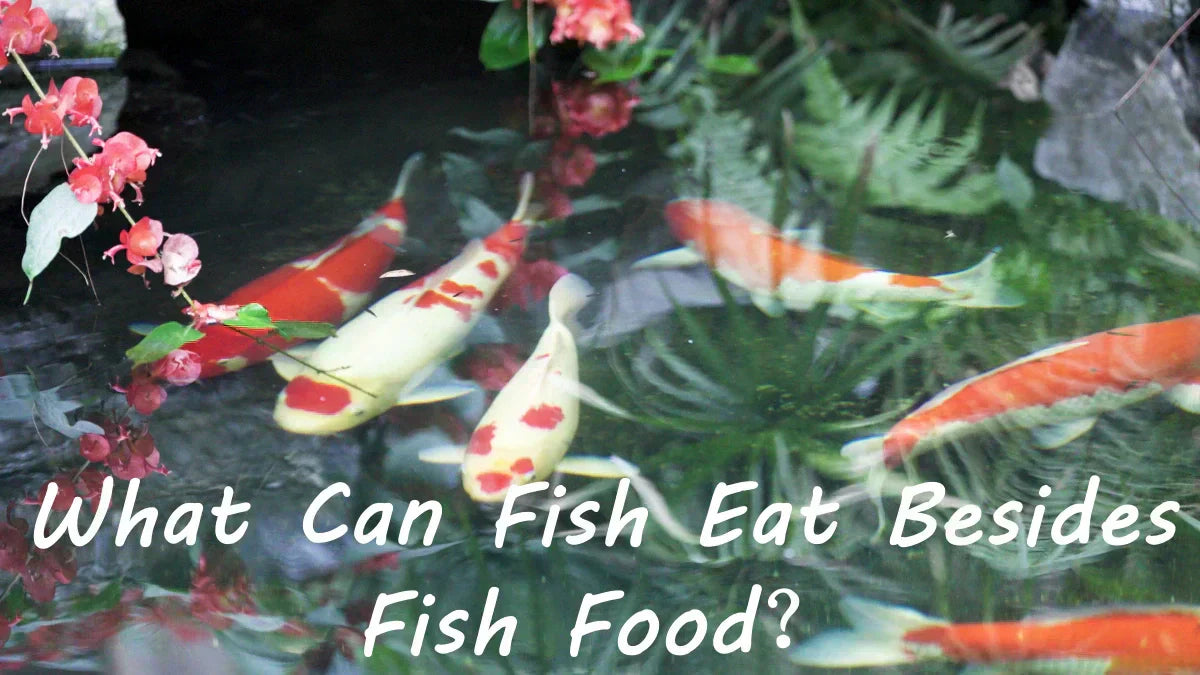That shimmering koi you bought last spring can handle frigid winters, but a brutal heatwave is another story. When surface water nudges past 86 °F (30 °C), oxygen dives, ammonia toxicity soars, and prized fish gasp near a skimmer that suddenly looks too small. Learning to manage koi water temperature is the difference between a calm, crystal-clear oasis and an emergency rescue with ice bags and buckets. Below you’ll find the science, the symptoms and—most useful—seven field-tested tricks for keeping a cool pond even when the patio bricks feel like a griddle.
Why Water Temperature Matters for Koi
Koi are ectotherms: their body temperature—and every metabolic process—tracks the water around them.
- 70–75 °F (21–24 °C) – Sweet spot for digestion, color development, and spawning.
- 78–82 °F (25–28 °C) – Appetite remains strong, but dissolved oxygen begins to fall.
- >86 °F (30 °C) – Gill stress, increased ammonia toxicity, and lethal oxygen dips at dawn.
High heat also accelerates parasites such as Costie and Trichodynia. Cool water stalls these pests and keeps bio-filters humming.
What’s the Ideal Water Temperature for Koi?

Aim for 70–75 °F (21–24 °C) by day and no higher than 78 °F (26 °C) at 4 p.m., the usual daily peak. In deep Japanese mud ponds, cooler layers average 5 °F lower than the surface, letting koi choose their comfort zone. Your backyard pond can mimic that gradient with the right depth (at least 3 ft/90 cm) and steady circulation.
Why Backyard Ponds Overheat in Summer

- Shallow shelves built for waterlilies store solar heat like a frying pan.
- Dark liners & stone radiate warmth long after sunset.
- Little surface movement means no evaporative cooling.
- Over-stocking raises biochemical oxygen demand, leaving less margin for temp spikes.
- Stagnant corners collect decomposing debris that releases extra heat (and ammonia).
Seven Smart Ways to Keep Your Koi Pond Cool
-
Provide Natural Shade
- Float lilies, water lettuce, or hyacinth until 50 % of the surface is shaded.
- Rig a pergola louvered to block midday sun.
- A floating solar fountain creates ripples that reflect rather than absorb sunlight and adds a decorative plume at night.
-
Increase Aeration
Oxygen solubility drops by roughly 2 mg/L for every 10 °F rise. Add:
- Bottom-mounted air stones powered by a quiet diaphragm pump.
- Solar aerators in remote ponds—no trenching, no bills.
- Surface agitation from a Poposoap fountain keeps 320 GPH rolling while its black “shade disc” blocks UV.
-
Circulate the Water
Dead corners trap 90 °F water pockets. Shoot for a full-pond turnover every hour or two.
- Waterfall pumps or spillway kits return oxygen-rich water to the surface, stripping CO₂ on every bounce.
- Even a short, 8-inch stainless spillway moves more heat than a large but idle statue fountain.
-
Add Cooler, Clean Water—Carefully
During dawn or late evening, mist a hose over the pond like rain. Keep temperature change <2 °F (1 °C) per hour. Rapid drops shock koi as badly as sudden spikes.
-
Limit Feeding
Above 82 °F (28 °C) koi digest slowly. Uneaten pellets rot, boosting ammonia. Feed half-rations once daily, or fast entirely if fish cruise the surface listlessly.
-
Clean Debris Regularly
Skim leaves, mop string algae, and vacuum fish waste. Less organics = less metabolic heat. A Poposoap solar pond filter (280 GPH model) lifts fines without tethering you to an outlet.
-
Monitor with Thermometers
Place digital probes in three zones—deep end, plant shelf, and waterfall return. Log readings at 8 a.m. and 4 p.m. Aim to keep the whole column in the 70s (°F).
Optional Upgrades for Heat Resilience
- Reflective pond covers—clear polycarbonate panels hinged for winter viewing.
- Energy-efficient LEDs—Poposoap pond lights run cool, are IP-rated for damp summers, and let you night-check fish without halogen heat.
- Battery packs—snap-in lithium modules keep pumps churning through overcast afternoons and brownouts.
What to Avoid During Heatwaves
- Huge water changes at noon—chlorinated tap water warms fast and strips slime coats.
- Algal-bloom algaecides—copper and peroxide reactions devour oxygen precisely when fish need it most.
- Blanket feeding—protein depletes already low O₂ levels and overloads filters.
- Turning off waterfalls to “save water”—evaporation is the cheapest natural cooler you have.
Conclusion: A Cool Pond = Happy Koi
Mastering koi fish water temp is less about gadgets and more about smart layering: shade on top, flow through the middle, and oxygen from bottom to surface. Combine floating plants, disciplined feeding, and diligent debris control with solar-powered gear—like Poposoap fountains, filters, and aerators—and you’ll enjoy cool backyard ponds that hover in the sweet 70-to-75 °F range even when the patio thermometer screams 100. Your koi will reward you with bright colors, steady appetites, and calm cruising—proof that a truly cool pond is a keeper’s best insurance policy.





Leave a comment
All comments are moderated before being published.
This site is protected by hCaptcha and the hCaptcha Privacy Policy and Terms of Service apply.